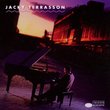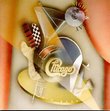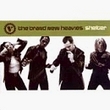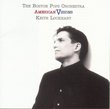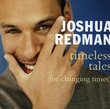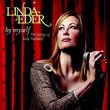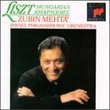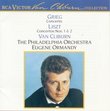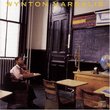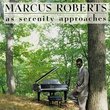| All Artists: George Antheil, Samuel Barber, John Alden Carpenter, Aaron Copland, Henry Cowell, George Gershwin, Charles Tomlinson Griffes, Roy Harris, Charles Ives, Roger Shields Title: Music in America Members Wishing: 0 Total Copies: 0 Label: Vox (Classical) Release Date: 9/6/1994 Genres: Special Interest, Classical Styles: Ballets & Dances, Dances, Forms & Genres, Short Forms, Sonatas, Suites, Variations, Historical Periods, Modern, 20th, & 21st Century Number of Discs: 3 SwapaCD Credits: 3 UPC: 047163302725 |
Search - George Antheil, Samuel Barber, John Alden Carpenter :: Music in America
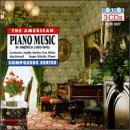 | George Antheil, Samuel Barber, John Alden Carpenter Music in America Genres: Special Interest, Classical
|
Larger Image |
CD DetailsSimilarly Requested CDs
|
CD ReviewsA fine survey, to whet one's appetite for more, in an often Discophage | France | 10/16/2007 (4 out of 5 stars) "These recordings date from 1975 (the ragtimes) and 1976. Vox was the Naxos of the LP era. They made rare repertoire available at cheap prices, in interpretations that usually were no more than serviceable. One definitive advantage of the CD reissues is that the Vox LPs were often marred by poor, noisy pressings, hampering a full appreciation of the recordings.
In this survey of piano music in America between 1900 and 1945, some of the expected warhorses are there - Gershwin's Three Preludes and Copland's Piano Variations - but mostly we get rarely if ever recorded pieces, roughly arranged in chronological order. The very principle of this collection does entail some frustration, both for its unavoidable omissions (where are Ornstein, Nancarrow, Ruth Crawford?) and because it gives us only snippets from all these composers (some of them so rarely heard that it only serves to whet and frustrate one's appetite), and sometimes only excerpts, either from complete Sonatas (Ives, Barber) or from cycles (MacDowell's Woodland Sketches, Thomson's and Riegger's etudes, Griffes' Four Roman Sketches). But then it is invaluable for all the rarities it offers, so let us happily welcome what we get. MacDowell's five excerpts from Woodland Sketches are rather uninteresting short tone poems in the style of Grieg, but Loeffler's language is more adventurous, conjuring the mysteriously sensuous harmonies of Scriabin and Debussy, with flights into Rachmaninoff. Virgil Thomson, Roy Harris, Walter Piston, Roger Sessions, William Schuman are all much better known for their big symphonic scores or, in the case of Thomson, his operas and film scores (as well as his music criticism), making the inclusion of some of their piano music all the more welcome. Thomson's Third Piano Sonata from 1930 was written for Gertrude Stein whose interest for modern music was greater than her piano playing abilities, and offers the peculiarity of being written only for the white notes. It is mostly in the form of a simple, two-part invention and, despite the liner notes' claim, often sounds like "music for children" - say, the first steps of "Mikrokosmos". Maybe Thomson's "early and notoriously dissonant Sonata da Chiesa" (according to the notes) would have been a more interesting choice. The two etudes are excerpted from Thomson's 1943 Ten Etudes, each of which deals with some particular technical difficulties. The two chosen by Shields sound like (slightly out-of-tune) tango and ragtime all-right, and their small musical substance makes me think they must offer more fodder for playing than just for listening. Like Thomson, Copland, Piston and Harris were pupils of Nadia Boulanger in Paris, but Barber, Schuman and Sessions were not. Still, their compositions share some common traits: they are usually stern, neo-classic in general outlook in that they are based on melodic and harmonic processes (often derived from Bach and the classical forms: 2-voice invention, chorale-like chord progressions, Passacaglia, Fugue) rather than the search of novel sound effects based on percussive attacks or clusters (as Cowell, Antheil and often Ives), and each movement often develops a certain specific compositional idea (sometimes overreaching their basic material to the point of satiation, as in the slow movement of Harris' Sonata or the introductory one from Sessions "From my Diary"). They never relinquish their ties to tonality, but their firm establishment is the modern times derives from their use of dissonance and bi- or polytonality. Even when they are not called as such, both Schuman's "Three Score Set" and Session's "From My Diary" mimic a Sonata construction (with slow introduction in the case of Sessions). Of all, it is Copland that establishes the most personal and immediately recognizable voice (to the point that the middle, choral part of Schuman's piece and some like passages of Harris strongly evoke the Brooklyn-born composer). Other than Copland's Variations, my favorite pieces are those from the early modernists, Antheil, Cowell and Ives. Among the set's rarities, Wallingford Riegger's choice of 6 out of his 12 studies "New and Old" (1944) also offers an exceptional discovery. Riegger began his artistic course as a traditional Romantic composer but gradually evolved a much more personal language based upon dissonant chromatic counterpoint and eventually twelve-tone procedures, sounding very different from what Schoenberg and his school derived from the process (see Riegger: Symphony No3, Romanza, Dance Rhythms, Music for Orchestra, Concerto for Piano and Woodwind Quintet, Music for Brass Choir, Movement for Two Trumpets Trombone and Piano, Nonet for Brass and Wallingford Riegger: Variations / Sym No.4 for a good presentation of his orchestral work). As implied by their titles (further developed in the composer's explanations that introduce them in the score), the etudes illustrate certain compositional processes, but they are much more than mere didactic and cold exercises, offering instead dazzling virtuosity and mesmerizing sonic imagination, making it all the more frustrating that Shields didn't record the complete set. The survey is completed by a fine program of 13 ragtimes - indeed one of the most vernacular inventions of American music - lasting 40 minutes in all, some of them highly elaborate and virtuosic, as Robert Hampton's "Cataract Rag", Lucky Roberts' "Pork and Beans" and Eubie Blake's "Troublesome Ivories". Where I have scores and/or comparative versions to allow for an informed opinion, Shields is mostly excellent to outstanding, to make one wonder why he didn't have more of a career (this is his only recording I am aware of). He's got the required virtuosity, snap, muscularity and sometimes frenzy (Ives' two Studies, Antheil's Sonata, Cowell's "Invention" and "Advertisement"), and a fine sense of color and atmosphere (Griffes, Cowell's "Exultation"). Only in Cowell's "Aeolian harp" do I find him, compared to the composer's own recording (Henry Cowell plays his own Piano Music), square in tempo ("Tempo Rubato" is the tempo indication) and greyer in his colors and dynamics. But part of his program Shield plays on an inferior piano which can't sustain a chord, and the sound of the pedal mechanism can be heard in some like a short maracas rattle. In some of the pieces Shield's humming can be heard, not outlandishly out-of-tune like Glenn Gould's, but strangely raspy, as if produced with the help of a kazoo. Composer Lejaren Hiller and Shields himself for the ragtimes contribute remarkably interesting, informed and informative liner notes. " |

 Track Listings (22) - Disc #1
Track Listings (22) - Disc #1